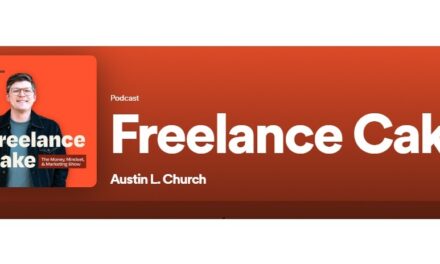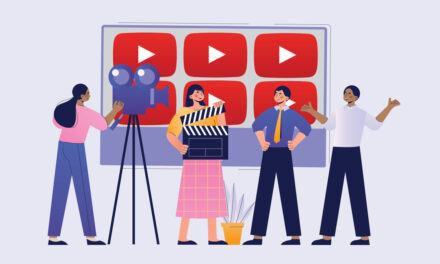
OCTOBER 22, 2024
full tilt
Social Media Platform Creator or Content Entrepreneur?
Yes, comparison is the thief of joy.
However, assessing if your content business is on track can also be a valuable benchmark.
Frankly, I find the analysis helpful in alleviating any impostor syndrome and giving you a reason to take a well-deserved pat on the back.
So this week, we’re digging into the results from Kajabi’s The Reality of the Creator Economy research to help you see where you stand (and why we think you’re on the right track).
It must be said that Kajabi is a creator commerce platform, so it definitely has a business stake in the game. But that doesn’t mean you shouldn’t take its research seriously. In fact, many of the findings mirror The Tilt’s research on content entrepreneurship.
“The reality is social platforms were never meant to be places where people build sustainable businesses. Creators, who are increasingly seeing themselves as business owners, need specific tools to build and monetize their content to give them true ownership over their livelihoods, enabling them to build a life around what they know and love.
Nearly half of the surveyed creators earn less than $10K a year, and almost a quarter go two years before ever seeing a single dollar.
But revenue challenges aren’t a problem limited to the majority. They exist for high-earning creators, too, as Kajabi outlined in its State of Creator Report earlier this year.
Forty-two percent of high-earning creators say they would lose at least $50K a year if they lost access to YouTube. If Instagram went away, 38% estimate they would lose $50K or more, and a similar number (37%) say the same about the loss of access to TikTok.
Given that these platforms aren’t known for doling out big dollars to creators, the loss of a social media platform would trigger losses from related deals, such as advertising and sponsorships.
Matt Steffanina, founder of DNCR Academy, tells Kajabi that a small portion of his revenue comes from ads. “It’s great to have in the background, but I would never rely on it as my main income stream,” he says.
I realize these next stats serve Kajabi, but they still make a valid – the key differentiator – for a thriving long-term content business. You must have direct access to your subscribers.
Creators with 1K subscribers (who use Kajabi’s platform) earned:
- 288% more than YouTube creators
- 357% more than TikTok creators
- 577% more than Instagram creators
Owning your audience produces indirect effects, too. As Matt of DNCR Academy says, “Building an email list, a text list, and a digital business are all things that have allowed me a lot of freedom from the algorithms and social platforms. It allows me to be more free creatively and make the content I want to make.”
Other noteworthy findings in the research:
- The threat of a TikTok “ban” has spurred 28% of those creators to prepare for a future where the platform doesn’t exist. More creators relying on social media should do that even without a known threat to their preferred platform.
- 46% of creators find it challenging to maintain creative control of their content when working with brands.
- 45% of creators struggle to determine and negotiate fair compensation.
The latter two findings reinforce the need to think and act like an entrepreneur. You must not only own the audience but also own your business. Assess the market, be confident in your rates, and establish contracts that work for both you and your client/customer.
And that will produce the joy of content entrepreneurship.
Helpful Resources:
- Paid Sponsorships: Build a Better Negotiating Table
- 6 Business Contract Details To Know Before Signing
– Ann Gynn
content entrepreneur spotlight
Entrepreneur: Caroline Guntur
Biz: The Swedish Organizer
Tilt: Empowering creatives and entrepreneurs with digital systems, project management skills, and productivity strategies.
Primary Channel: Website (courses)
Other Channels: Newsletter (1.5K) LinkedIn (1K), YouTube (400), Instagram (1.4K), X (1K), TikTok (125), Pinterest (21.2K)
Time to First Dollar: 1 month
Rev Streams: Courses, coaching, workshops
Our Favorite Actionable Advice
- Create a business for your life: Caroline had a professional organizing business, but she could only do it by traveling to her clients’ homes. When that didn’t work for her life, she pivoted to digital decluttering and shortly thereafter launched online courses to help others organize their lives and businesses.
- Build a ladder: Her offerings start with a $50 mini-course and progress to a $6K program. In each offering, she promotes the next-level opportunity.
- Use free content to attract leads: From her first free YouTube course, Caroline adopted the strategy of giving away content to get people into her database and eventually convert them into customers.
- Scrub away: Her newsletter list grew to over 8K, but most subscribers weren’t engaged. So Caroline scrubbed the list over time and now has 1.5K subscribers and an open rate of more than 50%.
– Marc Maxhimer
Read the story of Caroline Guntur.
Know a content creator who’s going full tilt? DM us. Or email [email protected].
things to know
Money
-
Interest dip: Investments in US creator economy startups are down 16% in the third quarter over the same time last year to $253.1M, according to The Information’s Creato Economy Database. The top five categories are crypto, creator services, AI, music, and creator platforms. [The Information]
Tilt Take: Nothing to worry about. These big investors probably weren’t considering your content business but rather the services and platforms you might use. Stay focused on growing your audience, not investors.
Audiences
-
Can’t hide: X is changing its terms of service, so the accounts you blocked will be able to see your posts. They still won’t be able to engage with them. Also, X’s new terms of service allow it to use all your content for its Grok chatbot or any other AI system it might create. [PC Mag]
Tilt Take: Think long and hard about whether you and your business should still be on the platform.
Tech and Tools
-
Shorts’ long-range plans: Last week, YouTube stopped treating videos three minutes or less in square or vertical format as long-form videos. This week, longer Shorts will start showing up in Shorts feeds. By the end of November, longer Shorts will move to the Shorts Shelf in the subscription feed and the Shorts tab on channel pages.
Tilt Take: If you don’t want to end up in Shorts, make your videos longer than three minutes. And if you do find value in the growing interest in Shorts, make versions in less than three minutes. (Yes, it’s an obvious take.)
And Finally
-
Cooking TikTok: A flood of TikTok creator books hit shelves this fall. Publishers say they can be a good outlet for creators who talk about their food but don’t have the time to give the recipes. [Publishers Weekly]
Tilt Take: Think like Larry Canam. He and his son (David) wrote Milkshake Mondays, a consistently weekly feature on his channel with 6.7M followers. He didn’t throw in every recipe but pulled from his appointment video theme.
the business of content
- TikTok Is Killing Our Kids [and they know it] (Content Inc.)
- The Huge Opportunity to Build Trust with Media (This Old Marketing)
- Make Your Self-Published Books Stand Out with Custom Details (Publish & Prosper)
- Tilt Your Business is on hiatus today. Ann and Michelle return at a new time (4:30 p.m. ) on Tuesday, Oct. 29.
- ICYMI: Diversify your Revenue with Publishing a Book
Get more of the Full Tilt stories on TheTilt.com.
Know a content creator who’s going full tilt? DM us or email [email protected].
Want to advertise on The Tilt? Go here.
Or email us at [email protected].
Was this email forwarded to you? Get your own sub here.
Copyright ©2024 Lulu Press, Inc. All rights reserved.
Update your preferences | Unsubscribe | PO Box 12018, Durham, NC 27709





